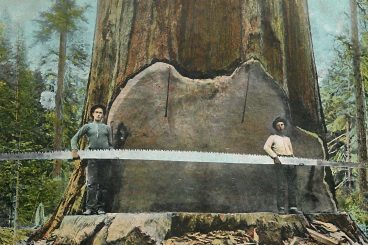
Andrew Welch
Published , updated · 5 min read · RSS Feed
Please consider 🎗 sponsoring me 🎗 to keep writing articles like this.
Modern SEO: Snake Oil vs. Substance
SEO has gotten a bad rap; but much of it deservedly so. Here’s a guide to how modern SEO should be done

Whenever a client I’m working with talks about an SEO firm they’re engaging, I take a deep breath. While there are most certainly some very worthwhile SEO firms out there, they are few and far between.
I’ve seen clients charged piles of money for what are effectively just recommendations copy & pasted from WooRank, Google PageSpeed Insights or other automated tools. These are great tools, and I use them all (see the A Pretty Website Isn’t Enough article), but copy & pasting boilerplate is not much of a service to anyone.
I’ve seen all sorts of nebulous claims and dubious practices bantered about. And it works; there are tons of companies out there that do nothing but SEO.
The reason it works is like cures for baldness or fad diets, SEO promises something that everyone wants. It plays on our base desires.
Everyone wants to be on the first page of Google’s search results. Everyone dreams of just putting a website up, and having the world beat a path to their door. But it doesn’t work that way, folks. Think about it: everyone else wants to be on the first page of Google’s search results, too.
To quote one of my favorite movies:
You’re not special. You’re not a beautiful and unique snowflake. You’re the same decaying organic matter as everything else.
Okay, so that’s a bit harsh. But there is a kernel of truth, which is that it’s utterly implausible for everyone to be on the first page of Google’s search results page (SERP). There are at most 10 search results per page, and there are millions of websites out there. If everyone is special, then no one is.
Google’s entire business model thrives on doing one thing: giving people what they want when they search for something. And your website may not be what people want, no matter how awesome you think it is. Short of altering the natural order of things, your website will eventually rank exactly how it should on the SERP.
Back in the day, unscrupulous SEO firms tried to alter the natural order of things by gaming the system. Some still do, but with Google actively punishing SEO spam, it’s a much less attractive prospect. Indeed, Google has changed their core algorithms in such a way that will make many a business model obsolete.
Today, there’s talk of inbound marketing, outbound marketing, SEO, SEM, growth hacking, and on and on. The SEO industry is largely a B2B industry — but I don’t mean Business to Business — I mean Buzzword to BS. But it can’t be all bad, can it? It’s not.
There are legit SEO firms that do A/B testing, quantify results, and approach SEO/SEM as a real science.
But I’m being overly critical here on purpose: because they are not the norm.
Before we get into what modern SEO is, it’s instructive to talk about what it isn’t. SEO isn’t an art. There’s no crystal ball. No black magic. No chickens need to be sacrificed. It’s deterministic, and measurable.
Here’s an example of what real SEO testing looks like.
Link Modern SEO
It’s not all doom and gloom; there really are things we can do to make our websites perform better on the SERP. But it isn’t magic, it’s work.

Modern SEO is really about best practices.
Here are the most important things you can be doing from a modern SEO point of view:
- Create good content
- Implement good technical SEO
- Make sure your site is performant
- Monitor, test, and revise your site
- Promote your site
Gosh, that seems pretty obvious, doesn’t it? I’ll go into the nuances of each.
Link Create good content
Designers, developers, and marketers are all very used to creating websites that are good for people. They look good, and they are rich in content.
By doing so, they are serendipitously also making websites that are good for search engines. Remember, Google’s goal is to return results that people want when they search for something. So if you create something that people want, you’re halfway home.
If you create content that is good, people will share it. They will link to it. You might even become the answer of authority on some particular topic.
This is how flowers market themselves. They don’t bombard the local bees with “email blasts”, they just look & smell pretty.
The content also has to be about a product, service, or interest that people care about. I can write the absolute best content in the world about the mating habits of the Aboriginal Shrew Rat, but the appeal just isn’t that broad.
Creating good content means that your content should reflect well the keywords that you think people might search on to find it. Remember, it’s not what you think the content is about, it’s what words people will use when they search.
There are many tools out there that will give you the top keywords your content reflects; if you’re using Craft CMS, the SEOmatic plugin’s SEOmetrics feature will do it for you.
The content should also be easily readable; there are many automated readability tests out there, the Flesch – Kincaid readability tests are a popular one. Again, SEOmatic will do this for you, and there are also websites that will do it for you as well.
Before you write the content for a page, you should think about what search terms you think people may be using to find your page. Then write your content with them in mind, and build into your workflow the testing of that content to ensure that it reflects your goal keywords and is easily readable.
Just as you’d make an outline of key concepts before writing a term paper, do the same here. Don’t go all crazy keyword-stuffing, because that will just annoy people who actually read your content, and search engines are pretty smart at sniffing it out as well.
Do, however, ensure that you have keyword consistency in your Heading tags, in your image’s ALT properties, in your page <title> tag, in your URLs, and in your content.
Finally, use your Google Analytics and the Google Search Console to see the search terms that people are actually using when they find your page, and adjust as needed.
Link Implement good technical SEO
Once we have good copy written, we then need to do a good job with the technical SEO implementation. A good technical SEO implementation is all about the potential for your content being well received.
If you shower, shave, do your hair, put on nice clothes, maybe some cologne or perfume, and have a smile on your face, you stand a better chance at meeting that special someone than if you roll out of bed with Doritos stains on your shirt.

It doesn’t mean it is going to happen, but it certainly makes it more likely. So let’s unleash our potential:
- Valid HTML — Your website should pass the W3C Validator to ensure that people and bots alike will be able to consume it
- Meta Tags — The title, meta description, and other tags should be of the right length, and should be unique on a per-page basis
- https — Your website should be encrypted with https; certificates are free now with LetsEncrypt so there’s no excuse!
- XML Sitemap — You should have an XML Sitemap that you submit to Google so that it knows how to crawl your pages
- Structured Data — You should be implementing JSON-LD Structured Data so that Google can add it to their Knowledge Graph, or display it on the SERP via Rich Cards (which is just a name for a subset of JSON-LD Structured Data). Check out the JSON-LD, Structured Data and Erotica article for more on JSON-LD Structured Data.
- Mobile Friendly — Your website should do well on the Google Mobile Friendly test
- Twitter Cards — Implement Twitter Cards so that when someone shares a link on Twitter, you can attach your branding & message to it
- Facebook Open Graph — Implement Facebook Open Graph for social sharing on Facebook, Pinterest, and Slack
- Keyword Consistency — Have keyword consistency in your Heading tags, in your image’s ALT properties, in your page <title> tag, in your URLs, and in your content
- Robots.txt — robots.txt is a text file that instructs robots (typically search engine robots) how to crawl and index pages on the website
- URL Optimization — Your website URLs should be descriptive but concise, human readable, and without redirects if possible. Like this: nystudio107.com/blog/a-pretty-website-isnt-enough not like this: nystudio107.com/satr/?pid=12?aid=142
- rel=publisher — Implement the <link rel="publisher"> tag (yes, Google+ is good for something), because it can affect how your brand is represented on the SERP
- Heading Tag Hierarchy — Heading tags should be used to effectively structure content on the page
- Don’t Duplicate Content — If you present the same page at multiple URLs, use <link rel="canonical"> to ensure that your content isn’t diluted
This may seem like a big list, and there’s only so much time in a day. That’s why you should leverage tools like SEOmatic (or whatever exists for your CMS of choice) to do the heavy lifting for you, rather then reinventing the wheel.
You’ll notice that while many of these bullet points are for search engines, others are for humans as well. That’s because you really want your content to be shareable and accessible these days, and that means making it good for humans, too.
If you’re one of the cool kids who is using a JAMstack, make sure you are doing server-side rendering of your JavaScript-generated content. While Google in theory renders JavaScript, in practice, it’s another story.
While there’s certainly more that can be done, this is a really solid foundation for good technical SEO.
Link Make sure your site is performant
As the A Pretty Website Isn’t Enough article makes clear, performance matters. It matters to people, and can greatly affect your bounce rate, brand prestige, and so on. But it also matters in terms of SEO.
Many people are aware that Google made page speed a ranking indicator for the search engine results page. But if that’s not a compelling enough reason to make your websites performant (and it should be!), read on.

Google has a bot called — amazingly enough — GoogleBot. It crawls your webpages and indexes them; but it has a crawl budget for each website, and even each web page on that website. Once Google has blown its crawl budget, it wanders off to index something more interesting.
So the more performant your site is, the more pages GoogleBot can index within its crawl budget. That means better coverage for your website as a whole, and better coverage of your long-tail search content that Google deems less important.
So make your websites fast. You might even consider making Google AMP versions of your pages, if it makes sense in your particular case.
Link Monitor, test, and revise your site
So you’ve done all of this, you’ve written great copy, your technical SEO is nailed, and your website is fast. We’re done, right?
Nope.
SEO is not a static thing; it’s something that needs to be monitored and curated. If your client doesn’t have the budget for that, that’s fine. But it will make a difference if they keep you or someone else on retainer to do continuous SEO monitoring and curation.
Let your clients know that a website without active SEO curation is like a car that’s never taken in for regular maintenance. It’ll decline over time.
That means creating new content, sharing it via social media channels, and it also means analyzing your Google Analytics and the Google Search Console on a regular basis to see what’s working, and what’s not.
For larger organizations, it means A/B testing to see what people are responding to, and what they are not. It also means monitoring your call to action funnel to see where people are dropping off.
A full discussion of all of this is beyond the scope of this article, and it very well may require hiring an SEO firm if it’s beyond what you normally do. Just be choosey about who you hire.
If they talk about “link building” or “getting on on the front page of Google”, run. Fast.
I always run the websites of the SEO firms I work with through a battery of SEO & performance tests before meeting with them. If they can’t get it right on their own website, it isn’t instilling much confidence on how they’ll do on mine.
If your technical SEO is good, you have good content, and your product/service is good… you probably don’t need an SEO firm at all.
There. I said it.
Link Promote your site
I realize that in an age of social media, and growth hackers, this will come as a shock. But yes, you do need to promote your website!
Whether that’s via social media campaigns, traditional print advertising, Google AdWords, or what have you, it still needs to be done.

In the movies, “If you build it, they will come” may work, but not in real life where millions of competitors are just as eager to get noticed as you are.
You can build the best widget in the world, but if no one knows about it, you can’t sell it. Which means people can’t benefit from it, and you end up resigning yourself to being a goat herder in Mongolia.
I listed this last because it’s fairly obvious, hopefully, but also because you really want to do everything else first.
Before you spend buckets of money on an advertising campaign, have your good content, technical SEO, and performance nailed. That’s how you’ll get the most bang for your buck
It doesn’t make any sense to bother with writing good content, SEO optimization & performance optimization only after you’ve started an expensive ad campaign. Use your ad campaign as tinder to light the blaze of SEO glory. If you’ve built it just right, it’ll go.
If you want to learn more about SEO, the Beginner’s Guide to SEO article is a great place to start.
Good luck everyone!








